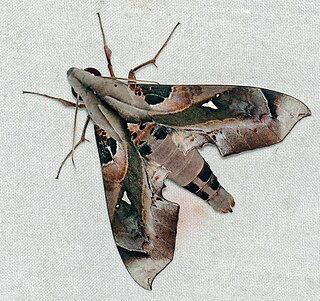
Arbutus is a genus of 12 accepted species of flowering plants in the family Ericaceae, native to warm temperate regions of the Mediterranean, western Europe, the Canary Islands and North America. The name Arbutus was taken from Latin, where it referred to Arbutus unedo.

The Pyraloidea are a moth superfamily containing about 16,000 described species worldwide, and probably at least as many more remain to be described. They are generally fairly small moths.

Emory Peak, located in Big Bend National Park, is the highest peak in the Chisos Mountains. and the highest in Brewster County. The peak is named for William H. Emory, the chief surveyor of the U.S. Boundary Survey team of 1852. From the Chisos Basin the peak appears to be a minor ridge, while the summit of Casa Grande, one mile closer, seems to be much taller. From the west, Emory Peak is clearly visible as a point slightly higher than most of the mountain range.

Arbutus xalapensis, commonly known as the Texas madrone, naked Indian tree or Texas madroño, is a species of flowering plant in the heather family. It is native to Central America, the southwestern United States, and throughout Mexico. It is found in canyons and mountains, on rocky plains, and in oak woodlands, at altitudes of up to 3,000 m in the south of the range, but lower, down to 600 m in the north of the range.

Ceratozamia sabatoi is a species of plant in the family Zamiaceae. It is endemic to Mexico, where it occurs in the states of Hidalgo and Querétaro. It is known from only two localities, one of which is degraded by agriculture and grazing.
Quercus xalapensis, or xalapa oak, is a species of oak in the red oak group. It is native to Central America and to Mexico as far north as Hidalgo and Sinaloa.

Evergestis is a genus of moths of the family Crambidae described by Jacob Hübner in 1825. A number of species are pests, including the cross-striped cabbageworm, a pest of cole crops such as cabbage.

El Pino Lake is a lake in Guatemala. It is located 30 km south-southeast of Guatemala City, in the municipality of Barberena in the Santa Rosa Department. The lake has a surface area of 0.72 km² and a maximum depth of 18 m. The lake waters are used for subsistence fishing, sport fishing, and swimming.

Veronica peregrina is a species of flowering plant in the plantain family known by several common names including neckweed, American speedwell, purslane speedwell and hairy purslane speedwell. It is native to the Americas, and is known on other continents as an introduced species and a common weed. It can be weedy in its native range as well, growing on roadsides, on fields, and in other disturbed habitat. It is an annual herb growing from a taproot. The two subspecies are defined generally on the basis of hairiness: ssp. xalapensis is coated in glandular hairs and ssp. peregrina is a hairless variety. The plant produces erect stems up to about 30 centimeters tall. The leaves vary in shape from linear to lance-shaped to spoon-shaped with smooth or serrated edges; the lower leaves are borne on petioles. The inflorescence is a loose terminal raceme of flowers and lance-shaped bracts. The flowers are generally white and 2 or 3 millimeters wide.

Madoryx plutonius is a moth of the family Sphingidae.

The Phycitini are a tribe of moths of the family Pyralidae.

The Anerastiini are a tribe of moths of the family Pyralidae.
Nefundella distractor is a species of snout moth in the genus Nefundella. It is found in Puerto Rico.
Nefundella tolerata is a species of snout moth in the genus Nefundella. It is found in Bolivia.
Picramnia xalapensis is a plant species native to the State of Veracruz, Mexico. Type locale is in the mountains near the City of Xalapa.

Scopariinae is a subfamily of the lepidopteran family Crambidae. The subfamily was described by Achille Guenée in 1854.
Arbutus occidentalis is a shrub species in the heath family, that is endemic to Mexico.
Eugene G. Munroe was a Canadian entomologist who discovered numerous species of insects. He worked for the Insect Systematics and Biological Control Unit, Entomology Division in Ottawa, Canada.












